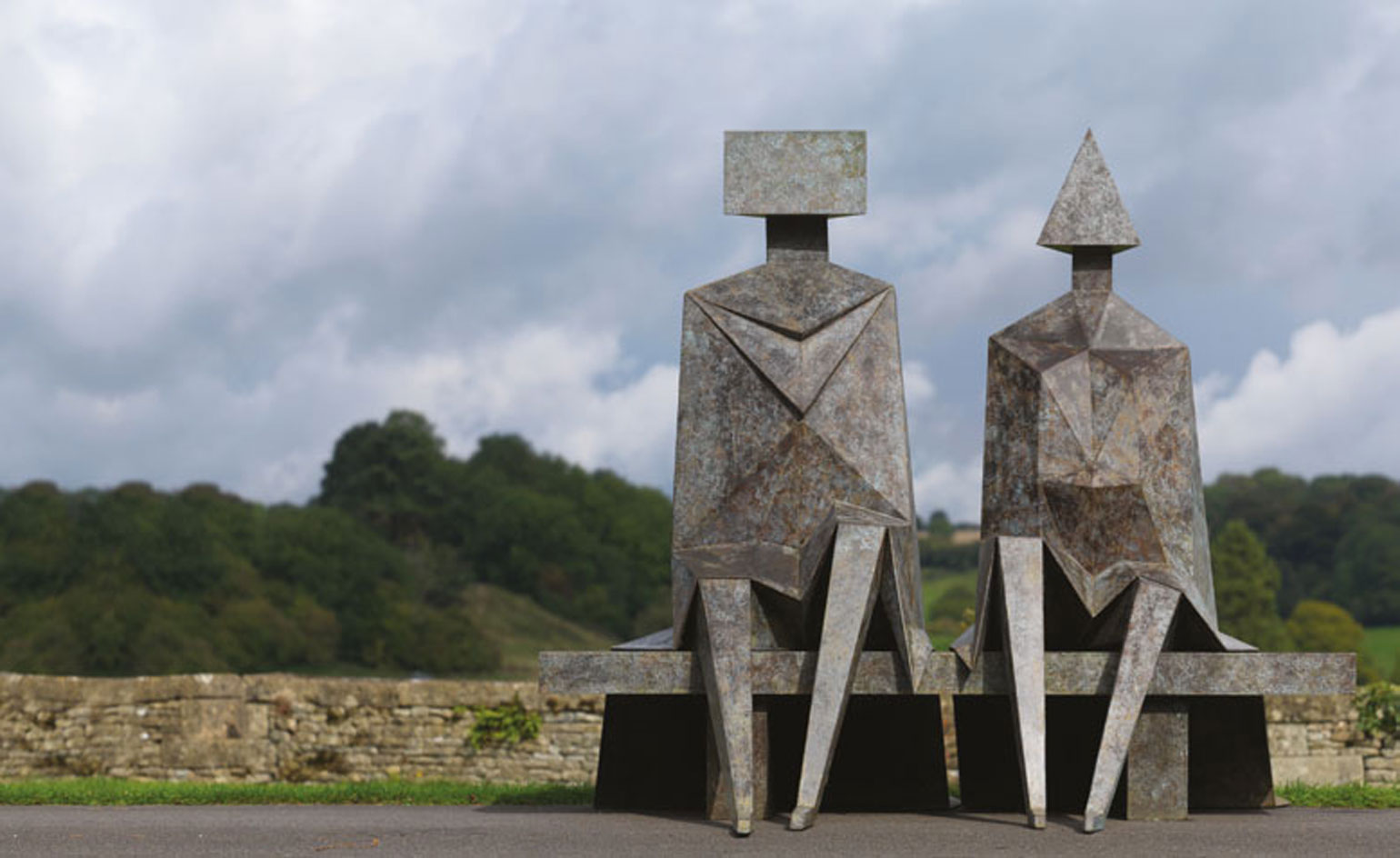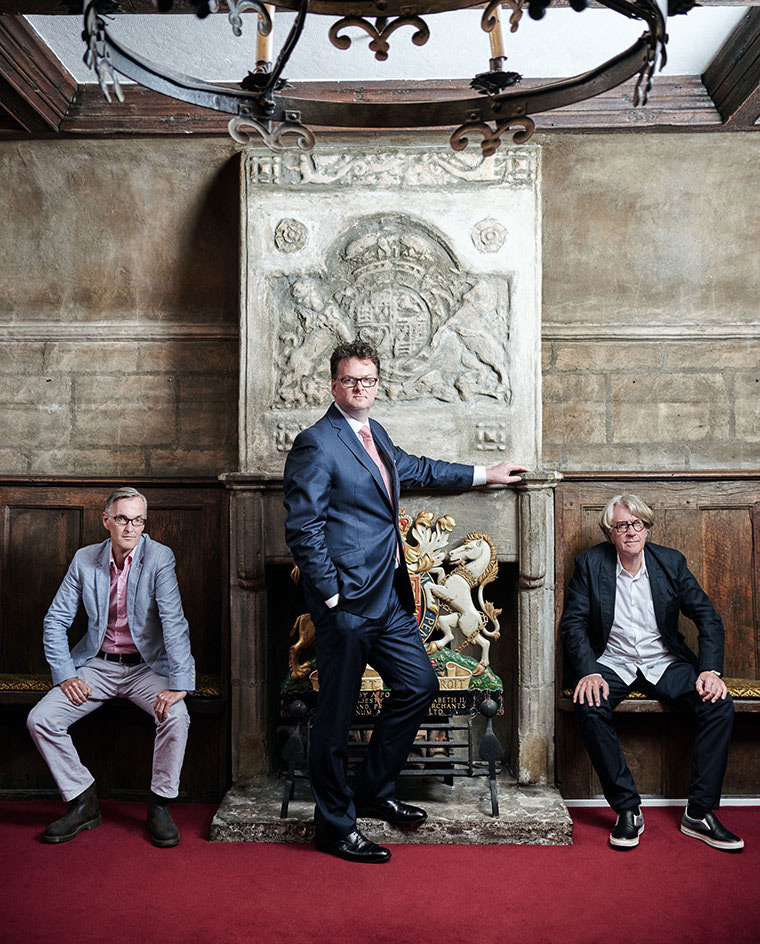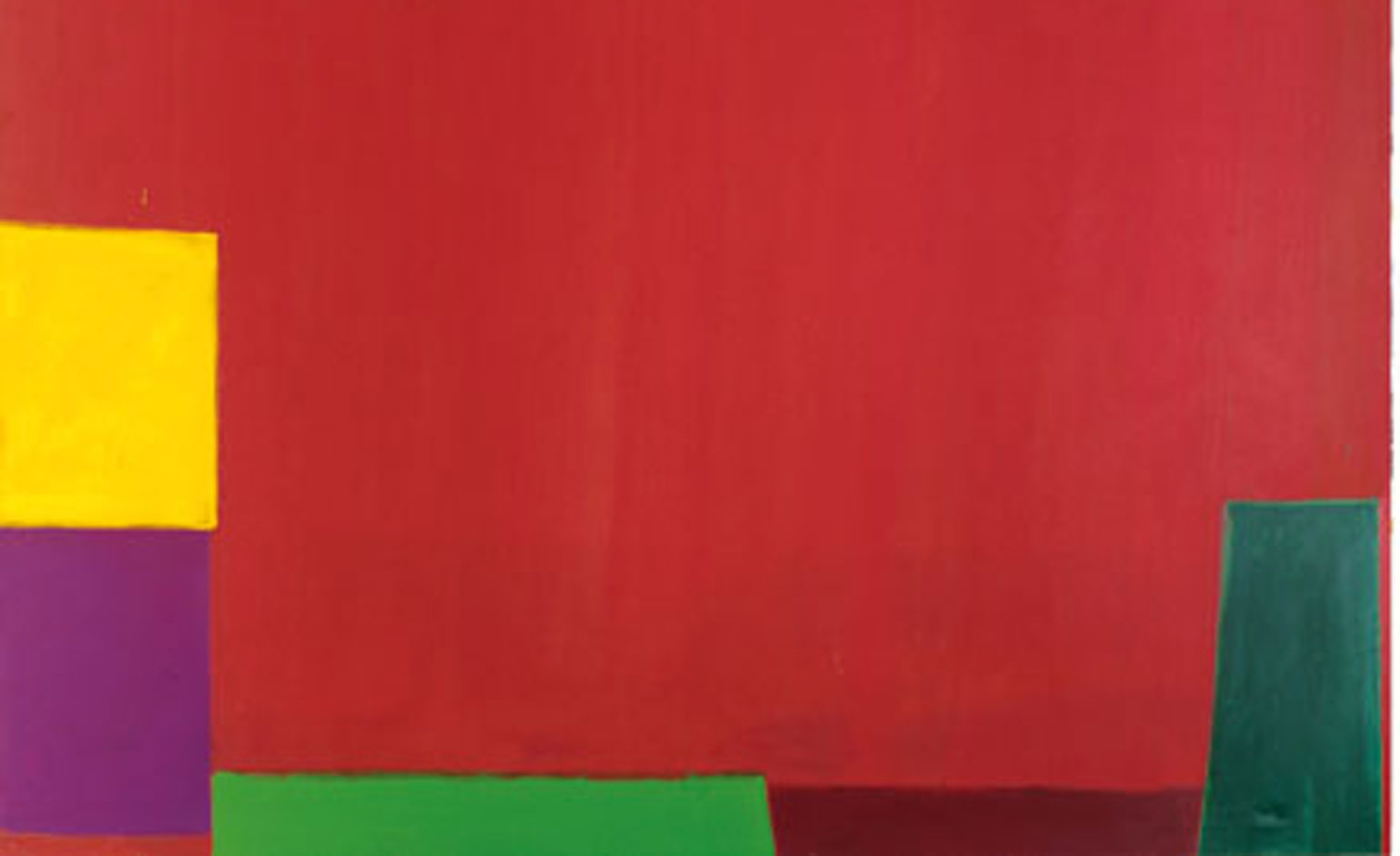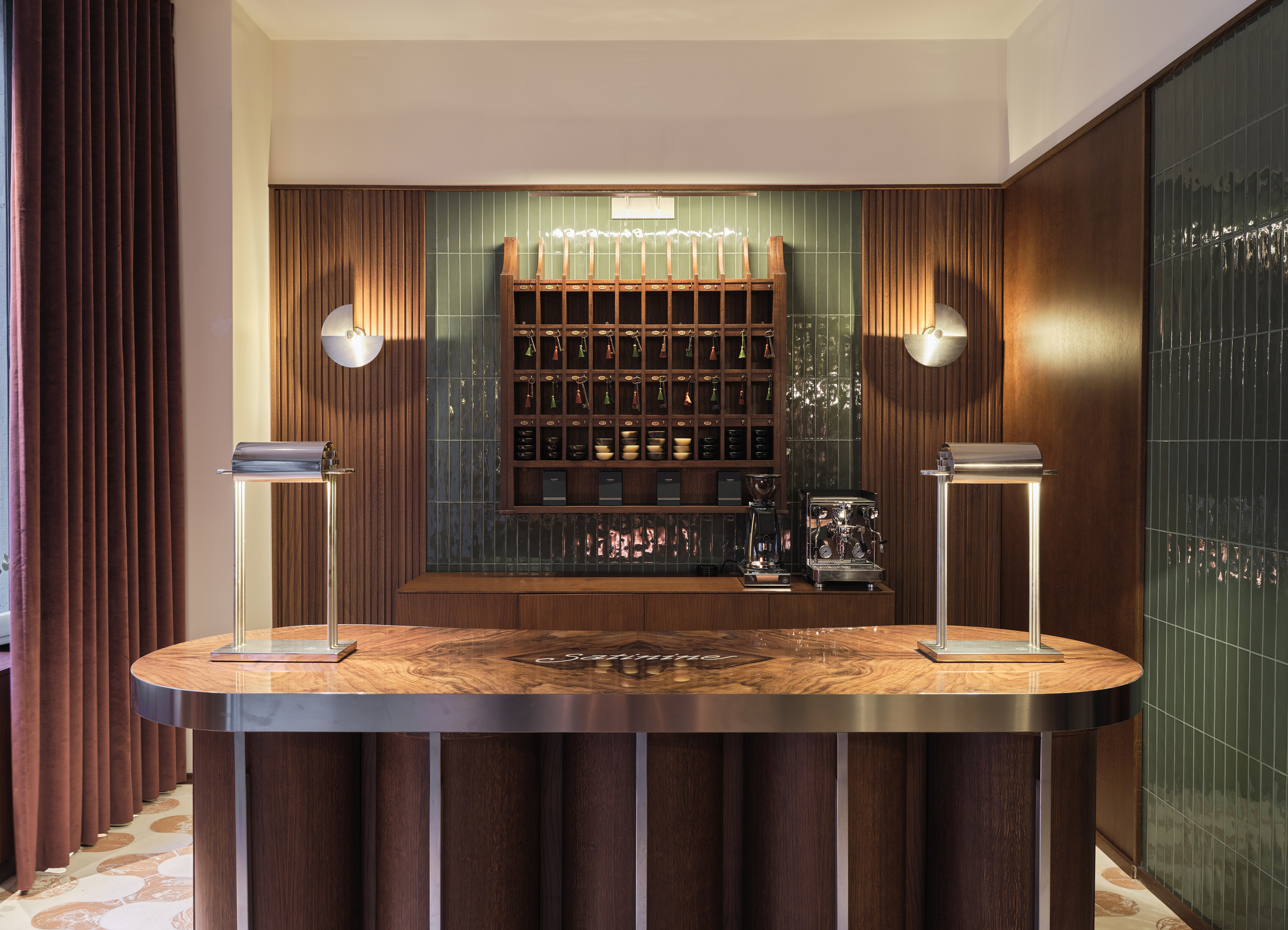
For the first time in over three centuries of trading, London store Fortnum & Mason is hosting a museum-worthy exhibition, a showcase of modern and contemporary British art, mined from the collection of ebullient collector Frank Cohen.
Sometimes dubbed the ‘Saatchi of the north’ or the ‘Manchester Medici’, Cohen’s colourful press cuttings have sometimes obscured the fact that his is one of the pre-eminent collections of British art. For over 30 years he has worked with Robert Upstone, a former senior curator at the Tate, to select key works by a range of artists from Howard Hodgkin to Tracey Emin. Now the pair have made a selection of his works to scatter around the store: in the basement dining area sits a piece by the Chapman Brothers, in the fifth floor corridor and entrance is a Paula Rego and an Edward Burra. How did they settle on such an unpredictable format for the exhibition?
‘As a curator, it’s a fascinating challenge. It’s a working space with so much going on. There’s a great synergy between the artworks, the objects for sale and the environment,’ says Upstone. ‘This is probably the first time that a major art exhibition has been staged within such a special, opulent, stylish environment that is still, nevertheless, a shop.’
It’s certainly unusual for a retailer to put this amount of room aside for a project that reaps no immediate profit, and speaks volumes about the unconventional approach to retail under the watch of Ewan Venters. The store’s CEO of four years, he guided Fortnum’s to its first double-digit growth in centuries: his strategy has been to reposition the store as an institution for London residents, rather than just a tourist attraction.
Venters is particularly keen to stress Fortnum’s longstanding commitment to the arts, and its open-door policy for visitors who want to come and see the exhibition for free. ‘Of course, don’t get me wrong, we’ll be very happy, when they’re here, to sell them a pot of tea and a box of chocolates,’ Venters notes.
As far as locations go, it’s unparalleled, nestled in the heartland of St James’s commercial galleries and auction houses, and directly opposite the Royal Academy. ‘Fortnum’s is a very British institution, so it had to be the best of British art,’ says Cohen. ‘I’ve been collecting modern British art since 1978.
‘People have really started to appreciate modern British art again,’ he continues. ‘They’re realising that Auerbach, Kossoff, Bridget Riley – and especially Francis Bacon, Henry Moore and David Hockney, who are out of my reach money-wise – are a big deal. If you look at the auction market, you can see in the past ten to 12 years a rise in prices. I think that’s due to a wider base of critical understanding and appreciation of our native artists. I think there’s always been a slightly British restraint, a reluctance to be too vocal about how great our own artists are.’
While Cohen might cut an eccentric figure, with his shaggy hair and oddball glasses (one lens frame round, the other square), the collection itself betrays an intellectual rigour, offering a remarkably comprehensive survey of 20th-century British art. The hope is the exhibition will not appeal just to Fortnum’s existing customer base, but to a new and younger art-going audience. In Upstone’s words, ‘The Auerbach in the front window of the store was painted in summer 1968, looking down across London from Primrose Hill and witnessing this explosion of colour. It’s about the past, yes, but it’s also about our understanding of the city today.’
The timing of the exhibition to coincide with the annual influx of the international art crowd for Frieze Art Fair and the October auctions is equally shrewd. Cohen says, ‘We hope it’s going to create a rumble in the jungle.’ Could it be the beginning of an ongoing series? He hesitates: ‘This is not something I do regularly. It has to be the right sort of environment. The only time I’ve done something like this before was at Chatsworth House; now it’s Fortnum & Mason. You couldn’t get two better institutions if you tried. Where do I go from here?’ Cohen pauses for thought, then grins mischievously. ‘Buckingham Palace?’

Pictured from left, curator Robert Upstone, Fortnum & Mason CEO Ewan Venters and art collector Frank Cohen in the crypt at Fortnum’s store in Piccadilly, London.

Cohen, in collaboration with Tate senior curator Robert Upstone, has selected key works from a range of artists from Jake and Dinos Chapman (pictured, their Unholy McTrinity 3, 2003) to Tracey Emin

Untitled 20.11.1964, by John Hoyland, 1964
INFORMATION
’Fortnum’s X Frank’ is on view until 15 October. For more information, visit the Fortnum’s and Mason website
Receive our daily digest of inspiration, escapism and design stories from around the world direct to your inbox.
-
 New York's members-only boom shows no sign of stopping – and it's about to get even more niche
New York's members-only boom shows no sign of stopping – and it's about to get even more nicheFrom bathing clubs to listening bars, gatekeeping is back in a big way. Here's what's driving the wave of exclusivity
-
 The diverse world of Belgian embassy design – 'style and class without exaggeration'
The diverse world of Belgian embassy design – 'style and class without exaggeration''Building for Belgium: Belgian Embassies in a Globalising World' offers a deep dive into the architecture representing the country across the globe – bringing context to diplomatic architecture
-
 Pull up a bespoke pew at Milan’s new luxury perfumery Satinine, an homage to the city’s entryways
Pull up a bespoke pew at Milan’s new luxury perfumery Satinine, an homage to the city’s entrywaysDesigner Mara Bragagnolo fuses art deco details to bring storied Milanese fragrance brand Satinine into the 21st century
-
 Out of office: The Wallpaper* editors’ picks of the week
Out of office: The Wallpaper* editors’ picks of the week'Tis the season for eating and drinking, and the Wallpaper* team embraced it wholeheartedly this week. Elsewhere: the best spot in Milan for clothing repairs and outdoor swimming in December
-
 Out of office: The Wallpaper* editors’ picks of the week
Out of office: The Wallpaper* editors’ picks of the weekFar from slowing down for the festive season, the Wallpaper* team is in full swing, hopping from events to openings this week. Sometimes work can feel like play – and we also had time for some festive cocktails and cinematic releases
-
 The Barbican is undergoing a huge revamp. Here’s what we know
The Barbican is undergoing a huge revamp. Here’s what we knowThe Barbican Centre is set to close in June 2028 for a year as part of a huge restoration plan to future-proof the brutalist Grade II-listed site
-
 Out of office: The Wallpaper* editors’ picks of the week
Out of office: The Wallpaper* editors’ picks of the weekIt’s wet, windy and wintry and, this week, the Wallpaper* team craved moments of escape. We found it in memories of the Mediterranean, flavours of Mexico, and immersions in the worlds of music and art
-
 Each mundane object tells a story at Pace’s tribute to the everyday
Each mundane object tells a story at Pace’s tribute to the everydayIn a group exhibition, ‘Monument to the Unimportant’, artists give the seemingly insignificant – from discarded clothes to weeds in cracks – a longer look
-
 Out of office: The Wallpaper* editors’ picks of the week
Out of office: The Wallpaper* editors’ picks of the weekThis week, the Wallpaper* team had its finger on the pulse of architecture, interiors and fashion – while also scooping the latest on the Radiohead reunion and London’s buzziest pizza
-
 Out of office: The Wallpaper* editors’ picks of the week
Out of office: The Wallpaper* editors’ picks of the weekIt’s been a week of escapism: daydreams of Ghana sparked by lively local projects, glimpses of Tokyo on nostalgic film rolls, and a charming foray into the heart of Christmas as the festive season kicks off in earnest
-
 Wes Anderson at the Design Museum celebrates an obsessive attention to detail
Wes Anderson at the Design Museum celebrates an obsessive attention to detail‘Wes Anderson: The Archives’ pays tribute to the American film director’s career – expect props and puppets aplenty in this comprehensive London retrospective